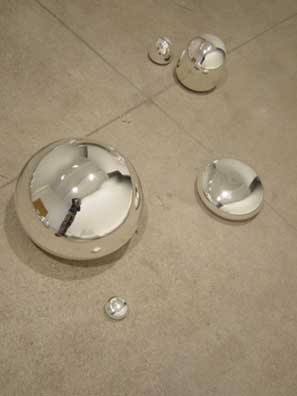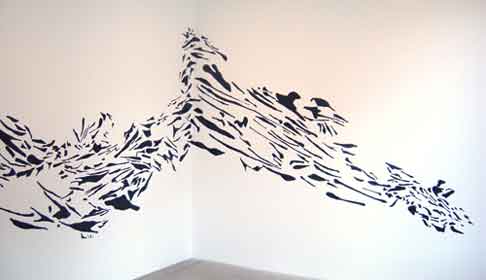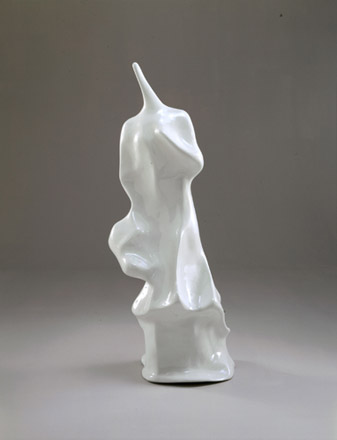| 
Here and Now, 2001.
Mirrored, blown glass in ten parts,
diameters 3" to 19".
|
The shadows that comprise this
work might have been blown by the wind, from another time to this one. Here
and Now is a floor installation of ten perfect mirrored-glass globular shapes
blown by the artist, also like drops of water, but expanded and now at various
states of rest. They are of this time. The globules are actually different shapes,
higher or flatter, and range in diameter from three to nineteen inches. They
are perhaps eternal volumes, determined by physical laws, but they are always
in the present, reflecting and distorting, naturally, what is there. Of course,
what is there is seen differently in each flattened or heightened sphere (including
the reflections in other spheres), and what cannot be seen on the other side
of each volume is nonetheless there, though in proving that one loses sight of
earlier moments, though not, reassuringly, of oneself. Each is an expanding,
or shrinking, universe in which everything is contained, an inversion of the
scattered energy pattern of Shadow of Ecstasy. |


